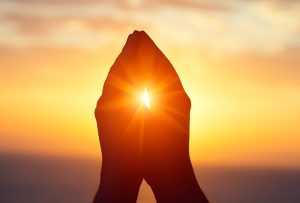
Life is an on-going journey which its destination is achieved after death. Life is meaningless without love and peace.
by Nadia Ramoutar MMM Communications Coordinator Ireland 13.12.2025
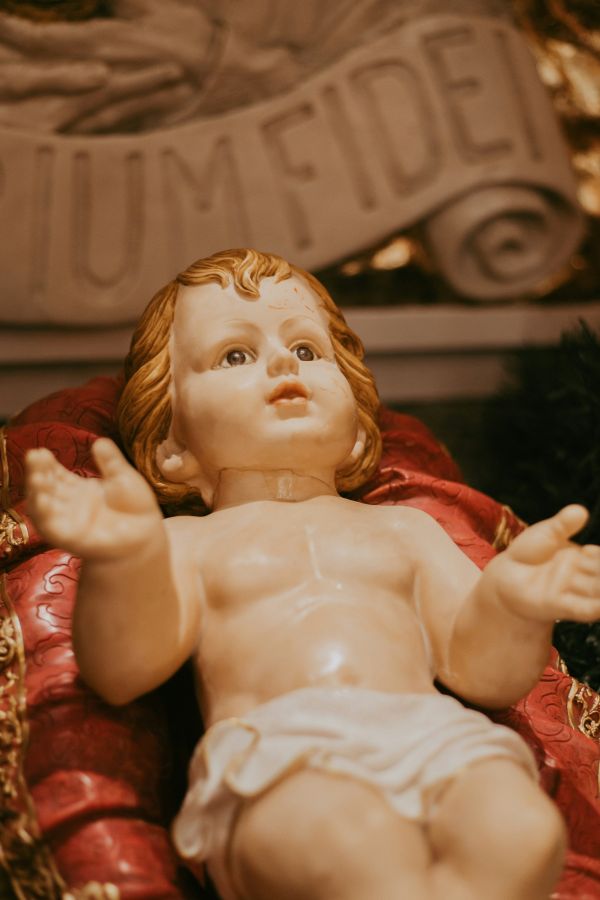 This year I got an opportunity to write a Children’s Christmas play. It came about in the unusual way that someone else who was supposed to do it, didn’t do it and a friend of mine was left in a bind. She asked me somewhat desperately to help her back in September. I naively agreed.
This year I got an opportunity to write a Children’s Christmas play. It came about in the unusual way that someone else who was supposed to do it, didn’t do it and a friend of mine was left in a bind. She asked me somewhat desperately to help her back in September. I naively agreed.
Months later, the play is written and the children are almost ready for the main stage. It is a joy to see words that you wrote come out of a young person’s mouth but it also shows how vulnerable we all are. How we can find ourselves repeating from a script someone else wrote for us? What messages are we sending to the world and what messages have we internalised through the noise of culture?
And when it comes to the Christmas holidays, it does feel like things speed up in a less than positive way. It’s as if the world is caught up in a script that says “Buy more, hurry up, rush around, eat more, drink more, and be worried that nothing is enough.” The traffic is heavier, people are short tempered, the shops are full and the true meaning of Christmas seems to somehow have gotten lost in the marketing.
When we step back, we see that the unlikely gift of Jesus to the world is a story that we tell each year over and over. The joy of it illuminates us and brings us comfort. We can feel the hope in the small boys arrival amidst the least privileged of circumstances to a young and nervous mother who has been shunned by the world. It can’t have been an easy moment. Yet it is exactly in that imperfect scenario that the world was forever changed and the impact of that scene continues to impact our hearts and lives today.
So when the time comes for us to celebrate Christmas can we carefully check what script we are reading from? Can we decide to slow things down and say no to the demands of a society out of control? Can we set aside the modern commercialism and pressure of perfectly wrapped parcels and ideal outfits? Can we overlook the food to see the faces of those we love around the table?
Because the greatest gift of Christmas without a doubt is just that – to be in the presence of love, whether we deserve it or not.
By Sr. Margaret Anne Meyer, MMM USA 10.12.2025
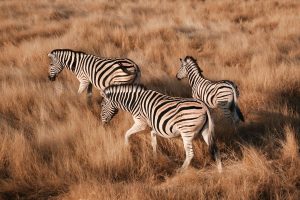 In October 1979, my mother Agatha, retired from school teaching, came to Tanzania to visit with me. We had a very enjoyable time together. Dr. Rijken’s mother-in-law also came, so I could not leave until they returned from Arusha. Mom had a chance to rest for a few days. She knew I was unable to meet her. She told me how glad she had been to see four MMM’s in Amsterdam, waiting for the same plane. She was not alone. She did not have a visa to enter Tanzania. Sr. Theresia Samati obtained a visa for her. She was incredibly grateful.
In October 1979, my mother Agatha, retired from school teaching, came to Tanzania to visit with me. We had a very enjoyable time together. Dr. Rijken’s mother-in-law also came, so I could not leave until they returned from Arusha. Mom had a chance to rest for a few days. She knew I was unable to meet her. She told me how glad she had been to see four MMM’s in Amsterdam, waiting for the same plane. She was not alone. She did not have a visa to enter Tanzania. Sr. Theresia Samati obtained a visa for her. She was incredibly grateful.
There was great rejoicing when Mom arrived. I was still working in the hospital until Dr. Rijken returned. Fr. John Mc Donagh took Mom on his village visits to say Mass. She enjoyed meeting the people. The nurses also came to a reception to meet my mother in our house. At first no one came at the appointed time, and I was worried. About a half hour later, they all came, decked out in their best attire. Mom was pleased to meet them.
Mom enjoyed meeting all our visitors. Many people appeared at mealtimes. One was Pastor Hoops. I asked him to come late to the OPD and then join us for dinner. My mother asked him were he a priest or a brother and he said neither, “I am Pastor Hoops. I am not a Catholic, but I like Catholic food.” My mother was extremely impressed.
Sister Doctor Marian Scena arrived around this time. We were glad to see her.
The following week, Mom and I went to Makiungu for a week and enjoyed visiting people there and seeing the sites. She loved meeting Sr. Christina and later shared a letter with me in which Sr. Christina told her about the terrible famine the people experienced in 1984 in the Singida region. The crops had failed from lack of rain and then at the last downfall the crops were flooded. My mother and Aunt Clare Twomey Torre used to send care packages of clothes and some food. Sr. Christina used the boxes of macaroni to thicken the soup for the hungry people. The food was distributed under the direction of the Pallotine Fathers. It was exceedingly difficult for the Sisters to cope with all the medical work and the feeding. The Sisters used to admit whole families to the hospital to care for them. I was not there at the time. I was on Sabbatical in the USA for 2 years and returned in 1985.
But now I am getting away from telling you about the exciting time I shared with my mother. Upon returning from Makiungu, we went to the game parks with Charles, a medical student who had come to Dareda for some medical experience. We enjoyed Lake Manyara where our hotel room overlooked the game park. We searched for lions who rested in tree limbs in the evening. It was delightful to be there with her.
In a few days we traveled to Ngorongoro Crater where we met a German couple and together, we shared the hiring of a land rover to travel down the escarpment to forty square miles of a game reserve. The lions were resting as we drove by. No one wanted to get out of the land rover. It was spectacular to see the wildebeest, hippos, deer, and giraffe. All were busy in their natural habitat. We stayed in a lodge that night and the next day prepared to return to Arusha. On our way to the main road, three soldiers stopped us for a lift. I told them we had a small car and could take only one. My mother was afraid they would harm us, but they understood our position and let us go on. I do not recall being afraid, just worried that the car would break down on the bad roads.
n Arusha, Olivio, a friend of the Sisters, offered to take my mother and me to the local hotel for a roast goat dinner dance. I had asked my mother to bring her evening dress, and she really enjoyed dancing with Olivio. Sr. Veronica Keaney came with us. We all enjoyed the evening. At midnight, Olivio said it was time to leave as he had to take his two children to the game park in the morning. My mother showed no signs of being tired of dancing.
Soon it was time for Mom to leave. She had stayed for three weeks and had put in her will that if she died in Tanzania, she would be buried there. I was extremely grateful that no harm came to her. What would my brothers and sister say? This time I could see Mom off and accompany her to the airport. It was difficult to say goodbye but we both shared a lot of happy memories of our time together.
By Jo Wardhaugh Doyle Ireland 06.12.2025
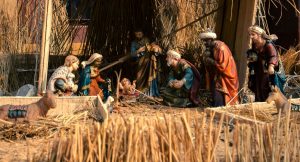 I once celebrated Christmas on the 7th of July 1990. The sun was blazing, and it was an unexpected moment of surprised joy. I was on a pilgrimage travelling from Rome to Assisi, moving towards Umbria. We had stopped at the Rieti valley for a few days. It was a key area in Franciscan history. One spot we were going to visit was called a village named Greccio. This was where Saint Francis, with the Pope’s blessing, set up the first ever living crib. Francis had travelled from Rome to Greccio and asked for one of the brothers to help him find an ox and ass to be part of the wondrous event of the birth of Christ. Greccio is a beautiful place of pilgrimage and deep spirituality.
I once celebrated Christmas on the 7th of July 1990. The sun was blazing, and it was an unexpected moment of surprised joy. I was on a pilgrimage travelling from Rome to Assisi, moving towards Umbria. We had stopped at the Rieti valley for a few days. It was a key area in Franciscan history. One spot we were going to visit was called a village named Greccio. This was where Saint Francis, with the Pope’s blessing, set up the first ever living crib. Francis had travelled from Rome to Greccio and asked for one of the brothers to help him find an ox and ass to be part of the wondrous event of the birth of Christ. Greccio is a beautiful place of pilgrimage and deep spirituality.
A miracle was supposed to have happened there at the Manger, where it was seen that Francis walked up to the lifeless body of the child in the crib and roused the child as from a deep sleep. They said this vision was not unfitting, for the child Jesus had been forgotten in the hearts of many.
We travelled to that place of pilgrimage. It was a cave, up upon a hill. The atmosphere was like a Tardis. It felt lost to time. It felt a sacred place. The atmosphere in that cave bypassed all logic and hit the soul. No one went untouched after entering the cave. It was like a womb, carrying life in it, it was full of vibration in its physicality. It was alive, touching the unawaken child within me. Many of us who were on the pilgrimage had left our lives behind and were tired, hardened to life’s circumstances. But there in Greccio, the vulnerability of the cold dark cave, met the reflection within us.
What new life was I seeking?
What desires and passions lay dormant within me?
We sat there, barely breathing. There was a presence, a presence saying to all, and sundry,
“I will come into your stall no matter how messy it is.”
Christmas is just that, it is a presence that will come into our need with a message saying, God has pitched his tent within us, He is with us.
We experienced mass in The Cave.
It was about a journey.
It was the journey from darkness to light, despair to hope, death to life.
I listened to the sermon expressing that our perception of reality must be changed if we are to surrender to that incarnation, to find a new joy in our despair.
In our poverty, what is it that we hoped for?
We were all visibly moved, our brains and logic were left outside that cave entrance. Yes, it was as though we had time travelled on this pilgrimage and we were left with what Saint Bonaventure said about Incarnation.
“Embrace that Divine Manger, press and kiss the boys’ feet. And in your mind’s eye, keep the Shepherds watch.”
Yes, Incarnation can happen every day if we believe that. That was one of the many lessons I learned in July 1990
By Vera Grant AMMM Ireland 03.12.2025
 On a course recently called, ‘The Gardened Soul’ I recalled my first real attempt to garden and to nurture the soil without realising that the same was happening to my spirit.
On a course recently called, ‘The Gardened Soul’ I recalled my first real attempt to garden and to nurture the soil without realising that the same was happening to my spirit.
Are you a gardener? she had asked when she came to assess what remained of the garden after the builders had left. She, Sheila was a landscape architect who had been recommended to give some ideas on the possibilities therein. ‘Oh gosh, no!’ I immediately replied, thinking of the birthday present my son, aware of my growing interest in the garden had given me a book, ‘An Idiot’s Guide to Gardening’
I wasn’t really sure what credentials one needed to call oneself a gardener thus in my negative response I was admitting that I knew very little about all that constitutes a garden, the plants, their names, the ideal growing conditions not to mention the soil, acidic or alkaline, clay or otherwise.
I just knew that I wanted something colourful with all year interest but more importantly that it was manageable.
In discussing a possible layout, I mentioned that I would like a woodland path at the rear of the garden. It was to be a secret place hidden by shrubs and bushes so the grandchildren could play ‘hide and go seek’.
Sheila’s reaction of ‘Oh no dear, this garden doesn’t lend itself to that, it just wouldn’t work. I will draw up some plans, and we can take it from there’ made me realise that this partnership wasn’t going to work either.
The idea of having a woodland path was for me, a must and once in my head it wasn’t going to be shifted by an, ‘Oh no dear’.
The proposed plans arrived, paid for, rolled up, bound with cord and relegated to the back shelf in the garage. There they still remain.
Covid arrived and with warm, sunny days and nowhere to go I moved into the garden with string and spade to mark out the territory and the woodland path slowly evolved.
They say where there’s a will, there’s a way and if someone was to ask me now, are you a gardener I would have a very different answer. The joy and fulfilment I have in the garden coupled with the sense of being at one with nature is mirrored in my spiritual journey, it’s a work in progress and always trying to be better.
And for the course which prompted this recollection are the immortal words, ‘The Garden, Gardens You’.
by Sr. Ruth Percival, MMM Ireland 29.11.2025
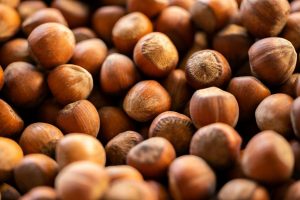 It was a beautiful sunny Autumn afternoon when I went out into the garden to collect hazel nuts.
It was a beautiful sunny Autumn afternoon when I went out into the garden to collect hazel nuts.
The sun was causing some of the trees to look as though they were on fire while others quietly held onto their leaves. Some trees had blood red leaves while others were all yellow. Just one corner of the garden!
Soon I was marvelling at the large size of this year’s hazel nuts, really big, and very difficult to crack as I was to find out later.
And so, I continued my walk under the hazel trees until for no reason, as I often do, I stopped and looked around and looked up into the tree above me and straight into the black beady eyes of a robin. We held each other’s gaze for what seemed ages. I then moved quietly on marvelling at those brief seconds when I got the impression the robin was hoping I would look up and see him.
Next stop was our Chestnut tree and here again I collected some chestnuts from under the blanket of leaves that hid them very well. Edible chestnuts are a real treat to eat when roasted.
As I returned to the house I smiled over at the apple tree, which, in this its second year, gave us two delicious apples, which we shared leaving us looking forward to next year and giving thanks for God’s wonderful abundance and promising that we will continue to protect our fragile earth in any small way we can.
by Sr. Genevieve van Waesberghe, MMM Ireland 26.11.2025
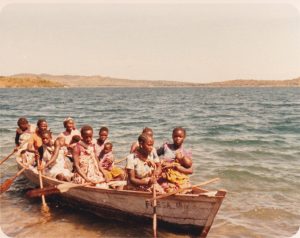 The Missionaries of Africa (M. Afr.) -or ‘White Fathers’ as they are often called because of their long white north African Gandura (robe)- just celebrated the 200th birthday of their founder, Cardinal Lavigerie.
The Missionaries of Africa (M. Afr.) -or ‘White Fathers’ as they are often called because of their long white north African Gandura (robe)- just celebrated the 200th birthday of their founder, Cardinal Lavigerie.
As MMMs missioned to Tanzania, we owe much to them: they taught us Swahili and introduced us to the people’s local culture. This enabled us to work more closely and efficiently with the people.
Personally, If I am an MMM, I owe it to a White Father who, in 1952, admired the MMM sisters who started Kabanga Hospital (Srs. Gemma Breslin, Sybil Magan and Margaret Garnett.) He saw them as free, unafraid, creatively responding to different medical needs and situations. Knowing my interest in medical missionary work, he gave me Mother Mary’s address and said: “with MMM, you will be FREE!” I took a chance, went to Ireland, met Mother Mary, joined MMM which I never regretted despite many challenges.
Later working in Namanyere Hospital – Sumbawanga Diocese (formerly Karema) – we held monthly clinics in Kipili, on the shores of Lake Tanganyika. Patients came from afar, rowing their canoes. Alfonsi Kakokere was our dedicated Medical Assistant, who, as I learned later, trained with a certain Dr Adrien Atiman in Karema (see below).
In 1974, while in Kipili, I received an emergency call. I had to go to Karema. It was a 100 kms’ journey, north of Kipili, with a small motor canoe. Karema had been a Belgian military base. Then, in 1884, the White Fathers arrived from North-West Africa with 500 ‘redeemed’ slaves. They established a village there. Karema became the main mission in what was known as the Apostolic Vicariate of Tanganyika.
I cannot forget my visit to Karema. I was introduced to a very old woman, the last of the slaves. She lived in a hut on the compound. In 1884, she surely was a baby (or a very young child!).
It is also in Karema and nearby that the extraordinary and saintly Adrien Atiman lived . Born in Mali, he was taken as a slave and later ‘freed by the White Fathers’ who brought him to Algiers. He converted, became a catechist. Lavigerie, seeing his talents, sent him to the Malta Institute to train as a doctor. In 1888, Atiman joined a White Father caravan to Zanzibar and across Tanganyika and arrived in Karema in 1889 where he worked for 67 years as a Catechist and a skilled Doctor until his death in 1956.
I am grateful to God for having known the Missionaries of Africa in Tanzania. Their history and humble prophetic presence in a changing Africa continues to be inspiring and challenging.
By Sr. Noeleen Mooney, MMM Ireland 22.11.2025
 The coming of November brings back a very special memory for me. Having been an only child for over eight years, I had not given any thought to a change in that status. I had noticed that my Mam was wearing loose, smock-type dresses, but no comment was made.
The coming of November brings back a very special memory for me. Having been an only child for over eight years, I had not given any thought to a change in that status. I had noticed that my Mam was wearing loose, smock-type dresses, but no comment was made.
I was in the third class and used to bring a flask of warm milk for lunch. One day the flask got broken. It seemed a big issue to me, and I knew I had to tell Mam about it.
When I got home, she wasn’t there! Most unusual, and no comment about where she might be. Instead, our next-door neighbour gave me my dinner and then – most unusual for a dark November evening – sent me out to clean her car with her daughter who was older, and would have known what was going on.
Some time later I was called in, and brought upstairs to meet my Mam and my new baby brother – safely delivered, and wrapped in a soft pink blanket. It was amazing!
My Dad was due home from work about an hour later and I was so sure that since I did not know about the baby’s expected arrival, then he could not have known either! Cold or dark, it did not matter. I had to swing on the gate to await his arrival! You can imagine the scene,
Next day, the teacher asked about the broken flask. Of course, I had not given it another thought! “It’s O.K! I have a new baby brother.”
Now, 67 years later, I can still remember the joy of that special day.
by Nadia Ramoutar MMM Communications Coordinator Ireland 20.11.2025
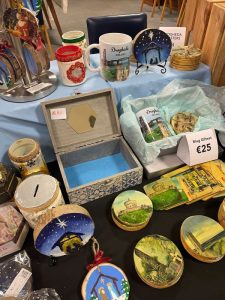 It is winter here in Ireland now. But the climate crisis has made for confusingly warm temperatures until this week. The result is that the bulbs I planted in the garden for Spring are starting to shoot. Today, it is supposed to hit freezing. I am not sure what my poor baby plants will do. So I will cover then tonight in hopes of protecting them.
It is winter here in Ireland now. But the climate crisis has made for confusingly warm temperatures until this week. The result is that the bulbs I planted in the garden for Spring are starting to shoot. Today, it is supposed to hit freezing. I am not sure what my poor baby plants will do. So I will cover then tonight in hopes of protecting them.
Life goes this way.
We think one thing will happen and then it doesn’t or it happens slower or faster than we expected. Getting life “just right” is so rare. I would have to say that I think the hope of expectation that life should be a certain way causes so many of us disappointment, grief or even anxiety. We live in an angst driven world and I can’t help but feel that this is the downside to the human capacity to think.
In overthinking we often lose our connection to a more organic way of letting what is best emerge. For the past few years now, we have been hosting a Christmas Craft Fair at the end of November at the Convent in Drogheda. This is something we brought back after realising that the “Sales of Work” were a big hit back in the early MMM days and Mother Mary Martin, our founder was encouraging of interactions with the community – she also fully understood that fundraising was the only way to grow her congregation.
In past years, the local children’s choir have come to our Christmas Fair and perform. This summer our MMM Sisters formed a choir to perform and record a song dedicated to our found Mother Mary Martin. (You can watch this on our YouTube channel). The children’s choir leader had the idea to invite our MMM Sisters to sing with the children. He selected “Lean on Me” as a song which seems ideal.
Our MMM Sisters work so hard all over the world to make life better for children. It will so lovely to see them singing with the local children here. It is so wonderful to see our choir performing with the children live. How exciting for the children who will always have such a lovely memory? Also, for the families to be there to see it too. There’s just so much beauty in seeing our Craft Fair grow to be a place where such a moment will take place.
When we began the Craft Fair years ago we never dreamed it would grow in such a beautiful way. It has slowly progressed and become a day of great joy. Perhaps we all need to keep in mind that if we do something small with great love that is the best way for anything to grow.
 Amidst the ghoulish and ghostly decorations along our main corridor in the Motherhouse MMM Beechgrove Ireland we had another activity – the booster vaccinations for Covid and Influenza. These were provided by a 10-person team from the HSE (Health Service Executive) with about fifty people being vaccinated – mainly sisters but a few staff members also. The organisation was detailed and left nothing to chance with a large, printed list reminding us of who belonged to what community and telling of the time of arrival of the team.
Amidst the ghoulish and ghostly decorations along our main corridor in the Motherhouse MMM Beechgrove Ireland we had another activity – the booster vaccinations for Covid and Influenza. These were provided by a 10-person team from the HSE (Health Service Executive) with about fifty people being vaccinated – mainly sisters but a few staff members also. The organisation was detailed and left nothing to chance with a large, printed list reminding us of who belonged to what community and telling of the time of arrival of the team.